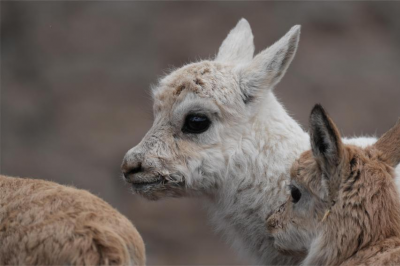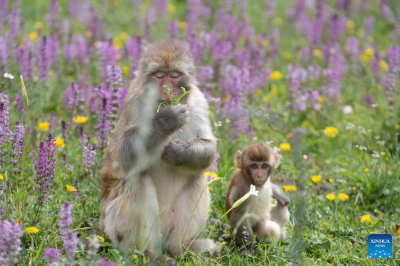| To Dorje, every day from mid-June to late August, his major assignment is transporting saplings up the Shigar mountain in Lhasa, capital of southwest China's Xizang Autonomous Region.
While having been doing so for over a decade, the way he does it now has completely been altered. "Initially we carried these saplings to the top on foot, which took up to eight hours. Later, we relied on mules, which also took a couple of hours. Now delivering 20 saplings via the cableway only needs a little more than 10 minutes, pretty fast and efficient," said the 40-year-old. What he has been doing has also transformed the area. Before, the sheep and cattle were unwilling to explore the barren mountain with exposed rocks. Now, the over 2,000 mu (133 hectares) of trees planted have completely replaced signs of blight with greenery. Shigar mountain's evolution is part of a regional afforestation project launched in 2012 to green mountains in Lhasa, to conserve water and soil sources, reduce carbon emission and improve air quality, all for creating a livable environment for residents. In 2021, a new round of the project set a further goal to grow over 2 million mu of forests within the next 10 years. Between 2022 and 2023, more than 390,000 mu of trees were planted in Lhasa, with an overall survival rate of over 85 percent, as per the regional forestry and grassland bureau. The project has also extended to the mountains near Lhasa. Planting trees has become a full-time job for Tenzin Dundrup, a 33-year-old villager from the city of Xigaze, who can make more than 70,000 yuan (about 9,800 U.S. dollars) a year. "My elder brother and sister-in-law also work here and their annual income exceeds 200,000 yuan a year," said Tenzin Dundrup. "More than 20 years ago, this place was barren and windy with lots of sand and dust. Now it's lush with much less sandstorms and better soil and water conservation," said Phurbu Tashi, Party chief of the nearby Sholkang Village. In the beginning, only a few households participated in tree planting. Now the number has surged significantly and the project offers more than 4,300 job opportunities daily, Phurbu Tashi added. After conducting a re-inspection, Tsering Norbu, a forest ranger responsible for inspecting areas near the Lhasa Konggar International Airport, is content with the result -- about 92 percent of the saplings survived. "For tourists, this might be the first scene in sight upon arrival. Impressing them with such a chunk of greenery is very meaningful," said Tsering Norbu. |
- Home
- News Tibet |Exclusive |China |World |Related News |Latest
- Documents White Papers |Others
- Photo Politics |Economy & Society |Culture & Religion |Human & Nature |Beautiful Tibet |Other Tibetan-Inhabited Area |Exchanges |Related
- Video News |Documentary |Micro-Video |Entertainment
- Art
- Tourism
- In Focus
- About Tibet






